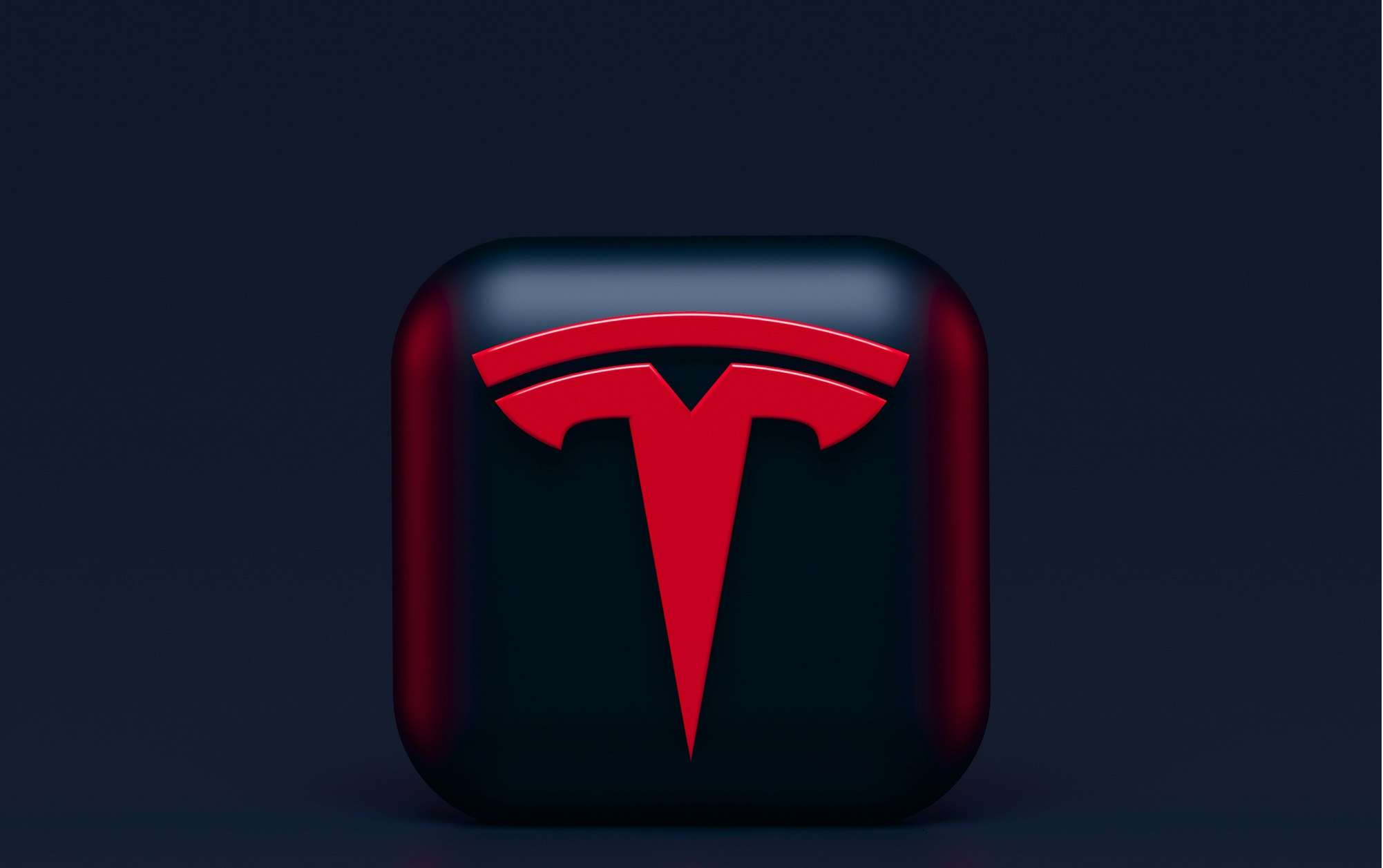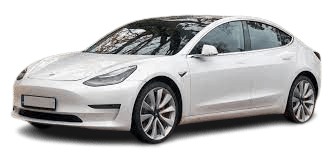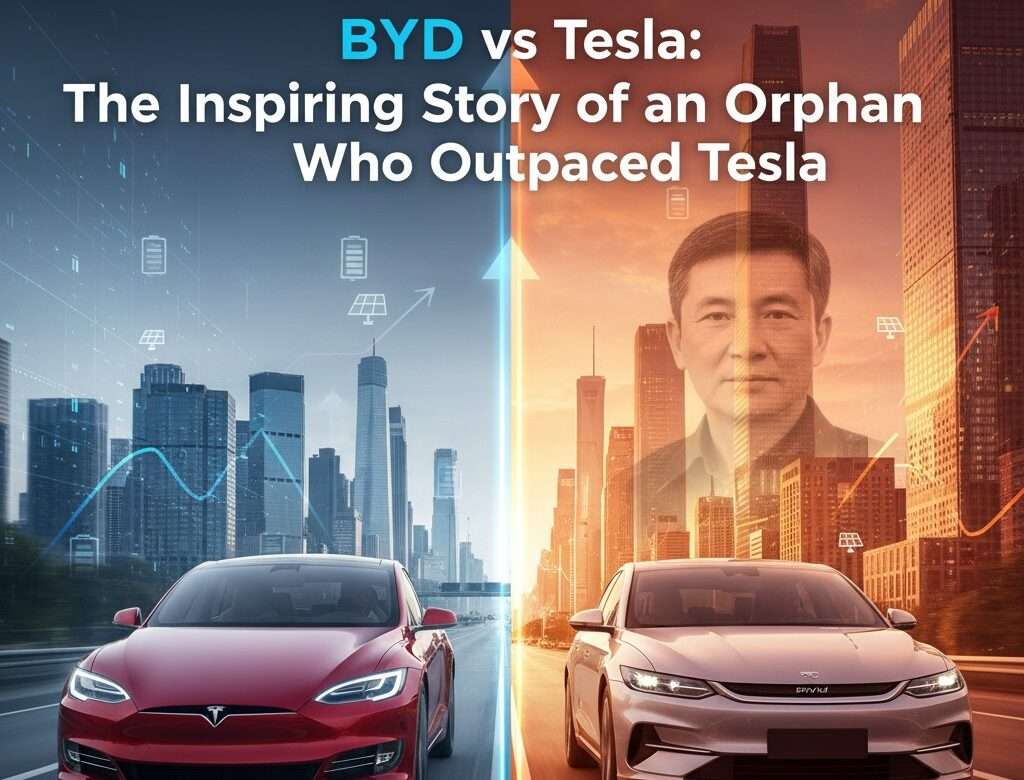- 16 February 2024
- No Comment
- 883
Tesla The Musk Magic – From Founding Sparks to Market Mastery

In a sea of car giants like Ford, Honda, Chevrolet, Toyota. . . … one name rises above the rest – Tesla Motors (TSLA).
But how did this electric car maker make its mark?
The year 2012 marked a turning point when Tesla, led by the visionary Elon Musk, unveiled its star player – the Model S. This move not only positioned Tesla as a rare independent automaker but also marked its entry into the electric car scene.
The sleek luxury sedan, starting at $89,490, quickly captured hearts and headlines. Consumer Reports showered it with praise, giving it an outstanding score of 99 out of 100 and declaring it the “best car ever tested”. The Model S hit the roads in 2013, making a roaring debut.
In September 2014, Tesla’s Model S was making history, setting an all-time sales record in the U.S. with a whopping 2,500 sold in just one month. The momentum didn’t stop; by Q1 2015, sales soared to an impressive 10,030 units.
Today, the Model S isn’t just a car; it’s a symbol of electric car excellence. As of February 15, 2024, Tesla’s market cap is $626 billion, had skyrocketed to $1.2 trillion in January 2022.
Key Takeaways:
Founded in 2003 by engineers Martin Eberhard and Marc Tarpenning, the visionaries set out to redefine transportation, and Tesla was their brainchild.
Enter Elon Musk, the co-founder of Paypal, who not only invested in Tesla but eventually took the reins as CEO.
In 2008, Tesla made waves with the release of its first electric marvel, the Roadster.
Tesla’s impact isn’t confined; it spans the globe. With production facilities strategically placed in China and the U.S., backed by 438 stores and 100 service centers worldwide, Tesla has solidified its presence on the international stage.
Tesla’s Journey from Ideation to Reality
Contrary to the myth of overnight success, Tesla’s roots extend to 2003, sprouting from the minds of Silicon Valley engineers Martin Eberhard and Marc Tarpenning. Their shared vision? Proving that “electric vehicles can be better, quicker, and more fun to drive than gasoline cars.”
The foundation of Tesla wasn’t laid in a day. Rewind to 1990 when Tarpenning crossed paths with Eberhard, then an engineer at Wyse Technology.
United by a passion for entrepreneurship, they forged a deep friendship that would shape the future. Together, they ventured into launching companies, including NuvoMedia, where they birthed the Rocket eBook in 1998.
Tesla’s Founding Moments and Musk’s Arrival
Eberhard’s journey into the world of automobiles began with a personal chapter. Following a divorce, he sought solace in the purchase of a sports car. This ignited his interest in the automotive realm.
Eberhard’s entry into the electric car scene took a significant turn with an investment in AC Propulsion, a boutique electric automaker. The wheels of destiny were set in motion.
In 2001, fate intervened as Eberhard and Tarpenning encountered Elon Musk at a Mars Society talk at Stanford University. Musk, already a serial entrepreneur with successes like PayPal, captivated them with his vision.
Musk’s journey to Tesla began with PayPal. In 1998, he co-founded the online payment system with Peter Thiel and Max Levchin, later selling it to eBay in 2002 for a remarkable $165 million in stocks.
Post-PayPal, Musk aimed for the stars, launching SpaceX in pursuit of advanced rockets and spacecraft. This venture marked the beginning of his cosmic ambitions.
Tesla’s Birth
Officially incorporated in 2003, Tesla’s mission was clear: invent a powerful, beautiful electric car with zero emissions. Co-founders included JB Straubel, the company’s CTO until 2019, and Ian Wright, who later founded Wrightspeed.
In 2004, Tesla entered the realm of venture capital, securing initial rounds of investment. Musk, not just a visionary but a financial leader, spearheaded the funding rounds and assumed the role of the head of the board of directors.
Diverse Supporters: Friends, Family, and VC Firms
Tesla’s backers spanned a spectrum from friends and family to notable VC firms like Valor Equity Partners. The eclectic support network contributed to Tesla’s foundation and ascent.
Tesla’s Visionary Frontman
Elon Musk, the charismatic figure synonymous with Tesla, often finds himself mistaken as the founder. Hailing from South Africa and now a Canadian-American, Musk’s journey is as diverse as his ventures.
Musk’s academic foundation at the University of Pennsylvania laid the groundwork for his multidimensional mindset. Armed with a dual degree in Physics and Economics, he embarked on a path that fused science and business.
In 1995, Musk delved into Stanford’s Applied Physics Ph.D. program but chose to abandon academia for the allure of entrepreneurship. This decision marked the beginning of his foray into renewable energy and space exploration.
Post-academia, Musk birthed successful ventures, including the online publishing company Zip2. The profits from this venture fueled the inception of X.com, an online bank, subsequently acquired by Confinity.
Tesla’s Genesis: The Formative Years
The early 2000s marked Tesla’s significant growth, culminating in the development of its maiden automobile, The Roadster. This phase laid the groundwork for Tesla’s transformative journey.
Tesla’s manufacturing prowess came to life in Fremont, CA, with the unveiling of the 5.3 million square-feet factory, Nummi. This colossal facility, once under Toyota and General Motors, became Tesla’s hub, housing two paint facilities and 1.5 miles of assembly lines.
2008 witnessed a pivotal moment as Elon Musk assumed the roles of CEO and product architect, positions he continues to hold as of March 2022. This transition marked Musk’s direct influence in steering Tesla’s course.
Simultaneously, Tesla unleashed its inaugural masterpiece in 2008—the Roadster sports car. Beyond being a vehicle, it stood as an automotive statement, lauded by Car and Driver as one of the most potent on the road.
Tesla’s Ongoing Triumph
Central to Tesla’s enigma is its unwavering commitment to electric cars and the innovation of electric vehicle (EV) powertrain systems and components. This relentless dedication forms the core of Tesla’s secret to success.
As of May 25, 2022, Tesla had 823 locations worldwide, including showrooms, Service Plus centers, and service facilities. As of December 2023, the US and China have 4,005 Tesla Supercharger stations, which account for 68.12% of all Tesla Supercharger stations globally.
A hallmark of Tesla’s strategy is its trademark approach of focusing on one product at a time. While the Model S remains a flagship, Tesla expands its reach with diverse offerings.
The lineup includes the affordable Model 3 sedan, the SUV-style Model X, and the crossover Model Y, captivating a broader spectrum of customers.
Tesla’s Strategic Maneuvers
In sync with the evolving landscape, Tesla strategically launches new products catering to a diverse consumer base. This forward-thinking approach ensures relevance in a dynamic market.
To assert dominance in its niche, Tesla spreads its wings globally. Operating in both the U.S. and China, the company strategically positions itself to tap into varied markets and stay ahead of the curve.
Addressing the critical aspect of lithium-ion battery packs, Tesla collaborates with key partners like Panasonic. Together, they pioneered the construction of the Gigafactory in Nevada.
This colossal facility not only produces the Model 3 but also serves as the epicenter for manufacturing battery packs and energy storage products, a move designed to optimize costs and drive sustainability.
Navigating Future Frontiers
The electric car arena is witnessing a surge, attracting major players like Mercedes Benz and BMW. Analysts predict that electric vehicles will constitute approximately 29.5% of all new car sales globally by 2030, signifying a paradigm shift in the automotive landscape.
The crystal ball for Tesla’s long-term success remains clouded. In 2014, Morgan Stanley’s auto analyst Adam Jonas foresaw a 40% shortfall in Tesla’s ambitious goal of producing 500,000 cars by 2020.
However, defying expectations, Tesla surpassed projections, delivering over 510,000 cars, exceeding its goal by 2%.
While uncertainties loom, one undeniable reality is Tesla’s transformation from a startup to a stalwart in the industry. The journey is marked by resilience and triumph, solidifying Tesla’s status as a pioneer in the realm of electronic cars.





